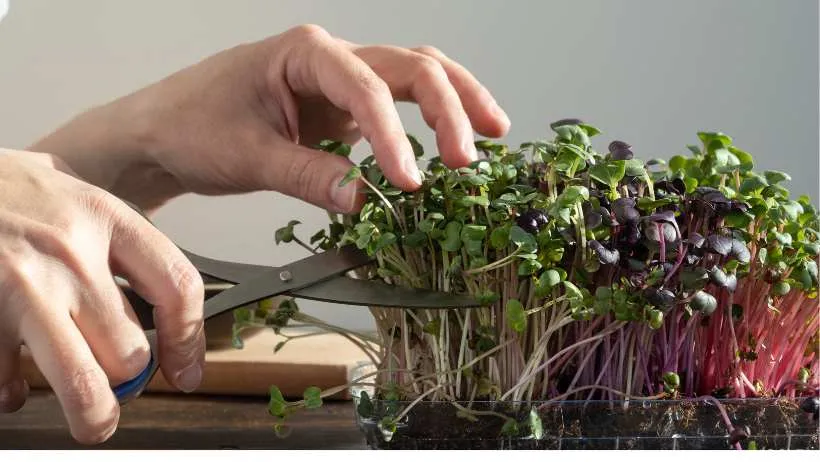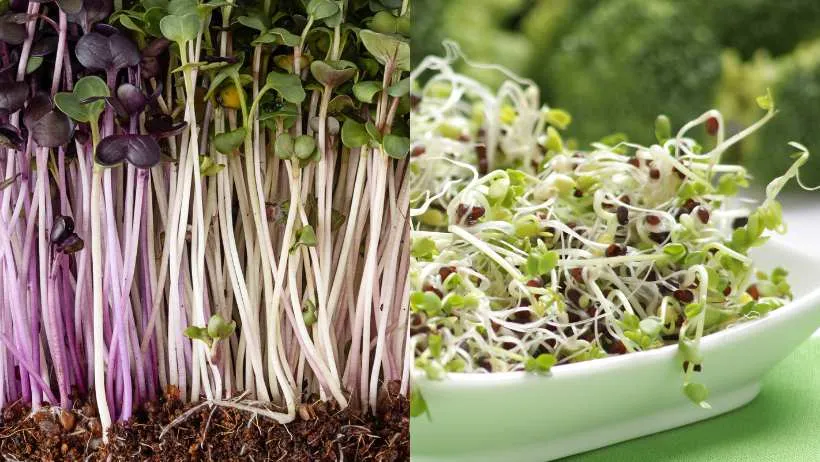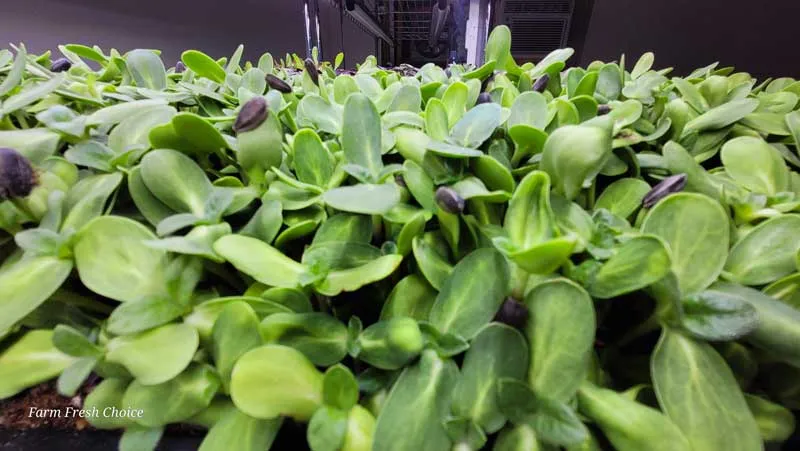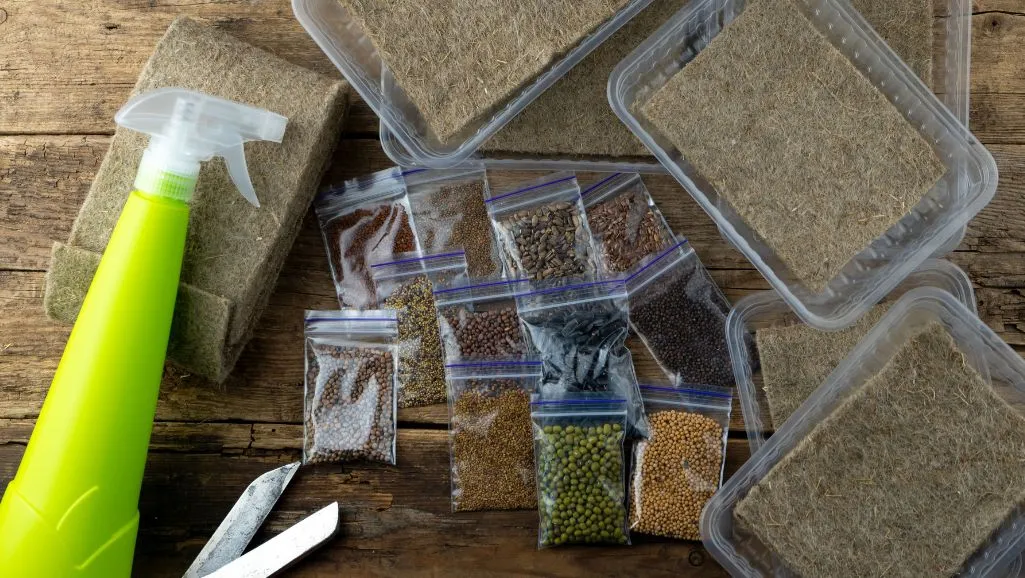They can contain up to 40 times more nutrients than their mature plant counterparts—but how much microgreens should you eat each day to benefit? If you’ve added them to your meals or are growing them at home, you might wonder what a healthy daily intake looks like. Too little, and you’re missing out.
Too much, and you risk imbalances or digestive discomfort. Whether using microgreens for general wellness, targeted nutrition, or as part of a specific diet, the right serving size matters.
This guide breaks down exactly how many grams or cups you should eat daily, how to measure portions at home, and what factors like age, lifestyle, and diet type can change your ideal amount—so you can use microgreens with purpose.
Recommended Daily Intake
You don’t need massive amounts of microgreens to benefit from them—most people can aim for about 1 to 2 cups per day, roughly 30 to 60 grams. That small portion is packed with nutrients, often containing higher concentrations of vitamins and antioxidants than their full-grown counterparts.
If you’re eating microgreens for general wellness, this range works well as part of salads, smoothies, or sprinkled over meals. But if you’re targeting specific goals like boosting immunity, increasing iron, or supporting gut health, you might want to lean closer to the higher end or varied types depending on your nutrient needs.
Should You Increase Your Intake? For Whom and Why?
Your daily intake can shift depending on your age, activity level, and existing diet. Athletes, vegans, or people recovering from illness may benefit from eating more nutrient-dense foods like microgreens. For example, broccoli microgreens are high in sulforaphane, which may support detox pathways, while sunflower microgreens contain healthy fats and proteins that suit higher-calorie diets.
Conversely, people with thyroid conditions might need to moderate their intake of cruciferous varieties like broccoli or kale, especially if eaten raw in large quantities.
Can You Eat Too Much Microgreens?
Eating too much isn’t likely to harm most people, but excessive consumption of certain types daily—without variety—can lead to imbalances or sensitivities. It’s smart to rotate between different types, like radish, arugula, beet, or pea shoots, to spread nutrient intake and avoid overloading on compounds like oxalates or goitrogens.
If you’re feeling sluggish, have nutrient deficiencies, or struggle to eat enough vegetables, then increasing your intake of microgreens can help fill in the gaps. They offer a concentrated way to get more fiber, phytonutrients, and enzymes without needing a large plate of produce. People on calorie-restricted diets, such as those trying to lose weight, may especially benefit since they add nutrition without adding bulk.
Serving Size & Measurement
What is considered a serving of microgreens? One serving is typically about 1 cup loosely packed, which weighs around 30 grams. That might sound small, but it delivers surprisingly flavor and nutrients. Visually, it looks like a generous handful—enough to top a sandwich or fill a small salad bowl. If you add them to a smoothie, soup, or wrap, that one-cup portion blends in easily without overwhelming the dish.
Different types of microgreens vary in density and structure, so volume-to-weight ratios aren’t always consistent. Broccoli microgreens are fluffy and light, so a cup might weigh less than 30 grams, while sunflower or pea shoots are thicker and heavier—30 grams could look like just half a cup. Radish and beet microgreens fall somewhere in between. If you’re tracking your intake for nutrition purposes, a digital kitchen scale is your best bet. Tare the container first, then add your greens until you hit your target weight.
How to Measure Servings at Home
You don’t need fancy equipment to measure microgreens accurately at home. A measuring cup gives a quick visual estimate, especially for recipes that require a set amount. For more precision, especially if you’re meal prepping or following a specific diet plan, using a food scale helps standardize your portions.
Some people even portion out their microgreens in small containers for the week—like snack boxes—making it easier to grab and use them without fuss. Remember that freshly harvested microgreens shrink slightly in the fridge after a day or two, so your measured cup might compact down a bit with time.
Consumption Details
Microgreens can be eaten in many ways—they’re not just for topping off fancy dishes. While they do add a punch of flavor and color to salads, sandwiches, and soups, they’re also great on their own. Try tossing a handful with olive oil and lemon juice for a quick mini-salad, or blend them into smoothies to boost your greens intake without chewing through a whole bowl.
You don’t eat the roots. Microgreens are harvested just above the soil or growing medium, leaving the roots behind. Exceptions are hydroponic systems with clean water where root systems are visible, but most people trim them off even then. Stick to the stems and leaves—where the flavor and nutrients live. If you see soil or fuzz near the base, that’s your cue to snip a little higher when harvesting.
Digestive Benefits or Sensitivities.
Microgreens are easy to digest for most people and can support gut health, thanks to their fiber and enzyme content. However, those with sensitive stomachs might want to start small, especially with spicy radish or mustard greens.
Allergies are rare but not impossible—sunflower and pea shoots come from seeds that may trigger reactions in some. If you have known food allergies, it’s worth checking with a professional before trying new varieties.
The Importance of Clean Sourcing and Washing.
Always rinse microgreens before eating, even if they’re homegrown or marked as “ready to eat.” Their tender leaves can trap moisture, making them a spot for bacteria if not stored or washed properly. To keep them fresh, use a gentle stream of cold water, pat them dry with a paper towel, and store them in a breathable container.
Weekly/Household Planning
If you’re trying to figure out how much to grow or buy, one person typically eats about 1 to 2 cups of microgreens daily, up to around 7 to 14 cups a week. That’s roughly 200 to 400 grams weekly. You might only go through half that amount if you use them mostly as garnishes or toppings. But if you’re building them into meals, smoothies, or salads regularly, it’s easy to go through a full tray’s worth in just a few days.
Weekly Average Consumption for One Person
Your diet style also plays a role. Vegans and vegetarians might rely more on microgreens for extra vitamins, especially B vitamins and iron from varieties like amaranth or beet. If you’re on a high-protein plan, pea shoots, and sunflower greens offer a plant-based protein boost.
To plan your weekly supply, consider how you use them: Are they an accent or a core part of your meals? That’ll help you decide how many trays to grow or how much to pick up from the market.
To keep things fresh, rotate trays every few days instead of harvesting all at once. Store harvested microgreens in breathable containers lined with paper towels to absorb moisture. Label each container by harvest date so nothing gets forgotten in the back of the fridge.
If you’re growing at home, stagger your planting—starting a new tray every 3 to 4 days can create a steady flow of ready-to-eat greens without overwhelming your kitchen or wasting produce.
Microgreens Yield & Cost
A standard 10×20-inch microgreens tray usually yields 8 to 12 ounces (225 to 340 grams) of greens, depending on the variety and it’s densely seeded. Broccoli, kale, and radish grow densely and yield well, while sunflower and pea shoots are bulkier but may weigh more per volume. For example, one tray of sunflower shoots might give you 10 ounces, while a tray of arugula could give you closer to 8.
Do they Grow Back After Harvest?
Most microgreens do not grow back after harvest. Once you cut them, they’re done. They’re grown for one quick harvest, typically within 7 to 14 days. Pea shoots are among the few types that may regrow a second time, but the second round is usually thinner and less flavorful. If you want a consistent supply, it’s better to plant multiple trays on a rotating schedule rather than hoping for regrowth.
How Much it Costs to Grow at Home?
Growing microgreens at home are surprisingly affordable. A tray costs anywhere from $1 to $3 in seeds plus a few cents for soil or a growing mat. If you’re using recycled trays and natural light, your setup cost stays low. Once you’re set-up, each tray might cost $2 to $4 and yield greens that sell for $15 or more at a grocery store. Using bulk seeds, compostable grow mats and reusing trays can further reduce your cost.
Depending on your eating habits, plan two to three weekly trays to keep one person stocked with microgreens daily. That gives you a consistent rotation and avoids running out mid-week. If you feed a couple or family, bump your tray count accordingly. Once you get into the rhythm, the cost savings and freshness make home growing a satisfying addition to your kitchen routine.
Additional Considerations
Before you ramp up your microgreen intake, a quick mental checklist can help. Think about any food allergies, especially seeds like sunflower or legumes like peas. Check how your body responds to raw greens—if you have a sensitive stomach or IBS, start with small amounts and choose milder varieties like lettuce, chard, or cilantro over spicy or fibrous ones.
Some people should talk to a doctor or dietitian first, especially if they’re on blood thinners or have thyroid concerns. Greens like kale, broccoli, and mustard contain vitamin K and goitrogens, which can interfere with certain medications or thyroid function when eaten in large amounts. This doesn’t mean you must avoid them—balance your intake and stay informed.
Different microgreens offer different benefits. Radish is spicy and energizing, rich in vitamin C. Pea shoots are sweet and full of folate. Broccoli is known for sulforaphane, while red cabbage microgreens bring color and antioxidants.
Rotating your greens not only keeps things interesting but also helps your body benefit from a variety of nutrients without overloading on any one compound.
More Microgreen Tips & Insights
Can Microgreens Make You Sick? The 5 Risk You Need To Know
Can I Eat Microgreens Instead of Vegetables







